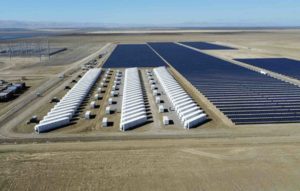It is rare to get an insight into the actual financial mechanics of Australia’s solar farms, given so few have actually finished construction, but the latest update from Genex Power, the owners of the new 50MW Kidston solar farm, makes for interesting reading.
It underlines why some developers and investors in Australia are prepared to take the risk on “going merchant” – in other words, selling the output of the electricity and large-scale renewable energy certificates into the spot market, rather than contracting to a third party.
Most large-scale solar and wind developers are going the contracting route – simply because of the scale of the investment.
Projects such as the Stockyard Hill, Murra Warra, Silverton and Cooper’s Gap wind farms are selling both the electricity and LGCs for a combined package of $60/MWh, or even less. That’s much lower than recent wholesale prices, and indicates zero value on the subsidy.
Those brave enough, or with the access to finance, are going the merchant route – which offers the prospect of big returns, at least for the current and near future years when wholesale prices and LGC prices are set to remain high.
The early returns for the Kidston solar plant indicate how. It is not yet at full capacity, but its early output since it began generation in December indicates a healthy return.
In March, for instance, actual and anticipated revenue till the end of the month is around $150/MWh, likely split around 50/50 between wholesale price and LGC prices.
(And this is despite the government order to state-owned generators to keep a lid on wholesale prices).
Genex director Simon Kidston also said that the solar farm is so far performing ahead of expectations and beating its anticipated “capacity factor” of 33 per cent. It is using First Solar Series 4 panels, a single axis tracking system from NextTracker, and SMA inverters.
This revenue bonus will not last, however.
The Kidston solar farm has so far installed around 45MW, but once it is fully complete – expected around July – a power purchase agreement with Queensland comes into force.
This will mean it will deliver output to Queensland under a “contract for difference” that includes an undisclosed floor price, while the LGCs are surrendered at no cost to the government.
Genex will then embark on the next stages of it Kidston project, including another 270MW of solar and a 250MW pumped hydro facility, located in the neighbouring abandoned gold mine of the same name, with around 10 hours of storage.
Genex says it is actively talking to other parties about financing for those projects.
Other solar farms are also going down the merchant route, but even if they can cash in on high wholesale prices and high LGC prices this year and next, the party won’t last long.
Wholesale prices are tipped to fall – some say dramatically, others say not quite so much – as the current boom in wind and solar farm construction delivers completed output, and increased generation, to the grid.
Also, as the large scale renewable energy target of 33,000MWh gets closer to being met, then the high prices that results from the three-year investment drought caused by the Coalition’s review of climate and energy policies, will quickly subside.
Estimates of the price of LGCs between 2020 and 2030 differ. Some say the price could be close to zero, but analysts and developers say that any price signal is likely to be low.
That, of course, is yet to be taken into account from the absurd predictions from the likes of the Institute of Public Affairs and the Murdoch media that continue to use a $60 billion figure to describe the cost of subsidies from the RET.
The IPA/Murdoch media figure dials in an estimated cost of around $80/MWh for each renewable energy certificate generated over the length of the scheme, all the way out to 2030. And that assumption is patently ridiculous and wrong.










